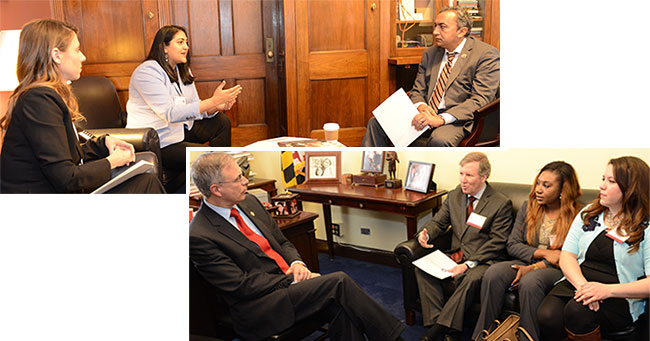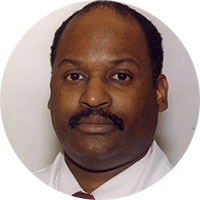Download PDF
WHAT’S HAPPENING
2016 Mid-Year Forum
In April, more than 450 Academy members gathered in Washington, D.C., to discuss some of ophthalmology’s most critical issues with regulators, legislators, and Academy leaders. EyeNet summarizes Mid-Year Forum sessions on payment policy, the IRIS Registry, and public disclosure issues.
Merit-Based Incentive Payment System (MIPS) and Alternative Payment Models (APM)—Which Medicare Payment Path Looks Best for Ophthalmology? The Medicare Access and CHIP Reauthorization Act of 2015 permanently repeals the Sustainable Growth Rate formula and replaces Medicare’s multiple quality-reporting programs with the single, new MIPS program. Starting in 2019, Medicare will reward physicians for participating in new payment and delivery models to improve the efficiency of care while preserving fee-for-service as an option. Because 2017 is the base year for individual scoring, the Centers for Medicare & Medicaid Services must finalize the rules in 2016. Attendees at this session gained an improved understanding of MIPS and APM approaches (though most ophthalmologists will be in MIPS rather than APMs), both of which will quickly dominate payment under Medicare.
Learn more at www.aao.org/myf16macra.
IRIS Registry and Its Impact: It’s More Than a Payment Penalty Avoidance Tool. How to Use It to Benefit Your Practice. The panel started with a demo of the IRIS Registry’s upcoming analytics module, which will become available later this year. This will make it easy for practices to review outcomes with subsets of patients—for example, those with age-related macular degeneration who had a cataract surgery complication. Panelists gave examples of how they’ve already been using the IRIS Registry to identify aspects of care and documentation that need improvement and to satisfy a hospital’s quality improvement requirements. They also discussed future roles for the IRIS Registry in monitoring practice efficiency and providing a platform for participating in MIPS.
Learn more at www.aao.org/myf16irisregistry.
Public Reporting of Physician Costs, Processes, Outcomes of Care. Can We Control It? How Do We Optimize the Process? Public disclosure of physician-specific performance and payment data is becoming increasingly common both in the Medicare and commercial payer space, and in the blogosphere. This session explored how physicians can best ensure that the information being released is accurate, clinically relevant, and risk adjusted.
Learn more at www.aao.org/myf16publicreporting.
 |
|
CONGRESSIONAL ADVOCACY DAY 2016. Congressman Ami Bera, MD (D-Calif., far right), a recipient of the Academy’s 2016 Visionary Award, met with Roma P. Patel, MD, MBA, Young Ophthalmologist Committee member (middle), and Rachel Simpson, MD, Advocacy Ambassador Program participant, sponsored by the Association of Veterans Affairs Ophthalmologists. ADVOCACY AMBASSADORS AT THE MID-YEAR FORUM 2016. Advocacy Ambassadors Erica R. Alvarez, MD (far right), and Usiwoma E. Abugo, MD (middle), both sponsored by Howard University College of Medicine, and John T. Thompson, MD, met with Rep. Andy Harris, MD (R-Md., far left).
|
ACADEMY STORE
New Waiting Room Video
The Academy’s new high-definition Waiting Room Video for the Ophthalmic Practice, Volume 3, makes the wait more pleasant and educational for patients. It features explanations of common eye conditions, appealing photography, calming music, and no advertising. Available in English and Spanish, the video’s MP4 format allows it to be used on any device or recorded on a DVD.
To order, visit www.aao.org/store.
PASSAGES
Robert A. Copeland Jr., MD

Dr. Copeland.
Dr. Copeland, professor and chairman of ophthalmology at the Howard University College of Medicine, passed away on April 11. He was 60.
Dr. Copeland specialized in corneal and external diseases and uveitis. He was working on a telemedicine program to help diagnose and treat eye diseases and disorders, as well as on a continuing education program for physicians. His research focused on socioeconomic and gender disparities in cataract surgery, including factors such as insurance coverage, income, transportation, service accessibility, and awareness. Dr. Copeland coauthored and edited Copeland and Afshari’s Principles and Practice of Cornea and served as editor for Advances in Ophthalmology & Visual System. He served on the EyeNet Editorial Advisory Board in 1998 and as councilor for the Academy from 2005 to 2011. At the time of his passing, he was the ophthalmology section chair of the National Medical Association, an OphthPAC Committee member for the Academy, and section chair for the advisory board of International Healthcare Services.
Robert B. Nussenblatt, MD

Dr. Nussenblatt.
Dr. Nussenblatt, chief of the Laboratory of Immunology at NEI, passed away on April 17. He was 67.
During his career at the NEI, Dr. Nussenblatt also served as clinical director and scientific director. In addition, he directed the NEI clinical fellowship program for ophthalmologists for many years.
Dr. Nussenblatt was an ocular immunologist and expert in clinical research design and conduct. His primary research interest was ocular inflammatory disease, specifically uveitis. With the goal of understanding human immune mechanisms and how they relate to the eye, he established a section on ocular immunology that later became the Laboratory of Immunology at the NEI. He was the scientific and clinical director of the National Center for Complementary and Integrative Health, as well as senior advisor to the deputy director of Intramural Research. He also served as councilor for the Academy and received the Academy Life Achievement Honor Award in 2011.
D.C. REPORT
Gearing Up for MACRA
Beginning in January 2017, the Centers for Medicare & Medicaid Services (CMS) will be reviewing Medicare physician performance, scoring them in the areas of quality, cost, EHR usage, and clinical practice improvement. This will impact payments to physicians starting in 2019. This is all part of the implementation of the Medicare Access and CHIP Reauthorization Act (MACRA) passed in 2015. This bipartisan bill repealed the Medicare Part B Sustainable Growth Rate (SGR) reimbursement formula and replaced it with new pay-for-performance programs—the Merit-Based Incentive Payment System (MIPS) and Alternative Payment Models (APM). The Academy leadership is focusing significant efforts on ensuring that a workable program emerges from this transformative change to reimbursement.
A pivotal step. With ophthalmology and its patients deeply dependent on Medicare, it’s important that CMS get this program right. MIPS will build upon existing programs but must improve upon them in terms of how costs, risk, and patient attribution are assessed—this is the only way to ensure that MIPS will work for physicians. If CMS incorporates flawed elements of existing policies, the result will be another program that fails to support physicians and their patients.
Advocacy goes straight to the top. In April, a top-level meeting took place between CMS and William L. Rich III, MD, Academy President, and David W. Parke II, MD, Academy CEO. Discussion covered how the agency will implement policies required under MACRA, the direct impact these policies will have on ophthalmology, and the challenges that ophthalmologists face in transitioning to APMs such as accountable care organizations and bundled payments.
The Academy continues to work closely with physician organizations on implementation of MACRA’s other components—especially MIPS for the immediate future, and looking ahead to possible APMs. The Academy will advocate for future legislation to improve or modify any parts of MACRA that are not working in order to ensure that ophthalmologists are fairly reimbursed by Medicare.